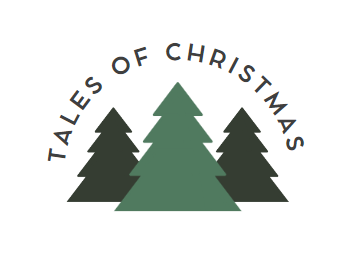‘Tis the season for festive gatherings and indulgent feasts, and for many, the centerpiece of the Christmas dinner table is a perfectly roasted turkey. Have you ever wondered why turkey has become the quintessential Christmas dish? In this article, we’ll dive into the rich history behind this tradition and explore how the turkey became the star of holiday feasts.
The Origins of Christmas Feasting
The tradition of festive feasting during the Christmas season dates back centuries. Historically, various meats such as boar, goose, and even peacock were popular choices for celebratory meals. Each region had its own culinary customs, reflecting the local availability of ingredients and cultural preferences.
Turkey Takes the Spotlight
Early Culinary Explorations
While the tradition of feasting during Christmas has ancient roots, the association of turkey specifically with the holiday gained momentum in the 16th century. Early English holiday feasts featured a variety of meats, but it was the arrival of the turkey from the New World that added a unique and flavorful twist to Christmas celebrations.
The Influence of King Henry VIII
King Henry VIII is often credited with popularizing turkey in England during the 16th century. The royal court’s indulgence in this newfound bird set a trend that would eventually trickle down to the general population. The turkey’s size and affordability made it an appealing choice for both noble feasts and more modest Christmas gatherings.
A Christmas Carol and Culinary Culture
Charles Dickens and the Victorian Era
The 19th century solidified the association between Christmas and the turkey, thanks in part to Charles Dickens and his timeless tale, “A Christmas Carol.” The vivid descriptions of the Cratchit family’s Christmas feast, complete with a “great, round, pot-bellied” turkey, captured the imaginations of readers and reinforced the turkey’s place as the symbolic centerpiece of holiday abundance.
The Rise of Middle-Class Celebrations
As the Industrial Revolution progressed and the middle class expanded, Christmas celebrations evolved to include more elaborate feasts. The turkey, with its impressive size and ability to feed a large family, became a status symbol of prosperity and abundance.
Expanding the Global Feast: Turkey on Christmas Tables Worldwide
European Variations
While England embraced the turkey as a Christmas staple, other European countries have their own unique traditions. In Italy, for instance, Christmas feasts often feature roasted meats, including turkey, but with a distinctive Mediterranean flair, incorporating local herbs and spices.
Scandinavian Twists
In Scandinavian countries, Christmas tables are laden with a variety of festive dishes, and turkey has found its place alongside classic favorites like ham and fish. In Sweden, a Christmas smorgasbord, or “julbord,” might include succulent turkey dishes prepared in various ways, reflecting the region’s culinary diversity.
The French Touch
In France, the holiday season is synonymous with indulgent meals, and while the French may opt for other meats like capon or duck, turkey is becoming increasingly popular, blending tradition with a touch of international influence.
Turkey in Latin America
A Fusion of Flavors
Latin American countries, with their rich culinary heritage, have also embraced the tradition of serving turkey during Christmas. In Mexico, for example, it’s not uncommon to find turkey as the centerpiece of a festive “Nochebuena” feast, adorned with traditional spices and accompanied by local delicacies.
Brazil’s Unique Christmas Feast
In Brazil, the Christmas celebration, known as “Natal,” features a grand feast called “Ceia de Natal.” While turkey is a common choice, Brazilians often infuse their Christmas dinner with local ingredients, creating a blend of international and regional flavors.
Turkey in the Southern Hemisphere
Christmas Down Under
In Australia and New Zealand, where Christmas falls during the Southern Hemisphere’s summer, the traditional Christmas roast takes on a unique character. While turkey is enjoyed, the warm weather encourages outdoor barbecues and seafood feasts, providing a refreshing twist to the holiday meal.
South African Celebrations
In South Africa, where Christmas coincides with the summer season, the festive table may feature turkey alongside a variety of grilled meats, reflecting the nation’s vibrant outdoor cooking culture.
Turkey Trends in Asia
An Asian Fusion
In some Asian countries, the popularity of Western-style Christmas celebrations has introduced turkey to the festive menu. In Japan, for instance, turkey may be incorporated into Christmas dinners alongside traditional dishes, showcasing a delightful fusion of culinary influences.
Emerging Traditions in Turkey
Interestingly, in Turkey itself, Christmas is celebrated by a minority population, and the Christmas feast often includes traditional Turkish dishes rather than the eponymous bird. However, the popularity of turkey in other parts of the world has not gone unnoticed, and some Turkish families now incorporate it into their celebrations.
A Quick and Easy Christmas Turkey with Jamie Oliver
Conclusion
From Europe to Latin America, the Southern Hemisphere to Asia, the presence of turkey on Christmas tables is a testament to its adaptability and the global influence of holiday traditions. As we savor the succulent flavors of our Christmas feasts, let’s appreciate the diverse ways in which this festive bird has woven itself into the fabric of celebrations around the world. Whether seasoned with local spices or paired with regional specialties, the turkey continues to be a symbol of joy, abundance, and shared traditions on a global scale.







